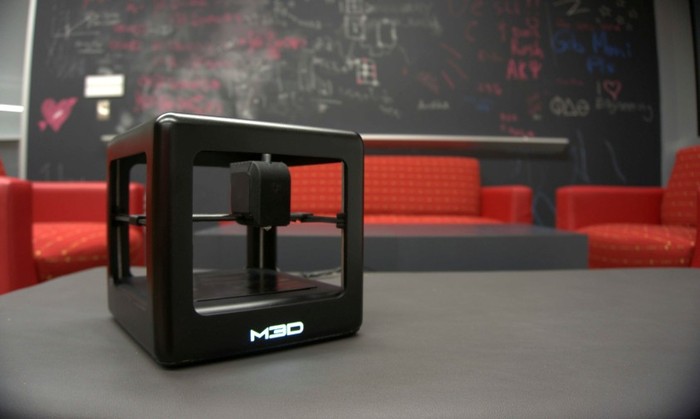
The Micro generate a lot of interest on Kickstarter, but has had to scramble to fulfill its promises. Courtesy of M3D.
Latest News
July 8, 2015
Much of the popularity of home additive manufacturing (AM) systems is due to Kickstarter campaigns. Without the advent of crowdfunding, customers would be far more limited in their options, and companies like Formlabs might never have gotten off the ground. Even with the interest in 3D printers, plenty of projects never hit their goals, and some of those that do run into different types of problems.
As an example of a successful Kickstarter, let’s look at the Micro from M3D. Nearly 12,000 backers ponied up a total of $3,401,361 in initial funding. Some of the interest came from the super low prices offered to Kickstarter backers. Early bird backers could pick up a printer for as low as $199, but while that can be a draw, it comes with its own pitfalls as well.
 The Micro generate a lot of interest on Kickstarter, but has had to scramble to fulfill its promises. Courtesy of M3D.
The Micro generate a lot of interest on Kickstarter, but has had to scramble to fulfill its promises. Courtesy of M3D.No startup is prepared to produce 11,000 units in a short period of time. Complaints from customers that ordered a Micro during or following the Kickstarter can be found anywhere M3D posts comments or information. The average wait time to receive an order looks to be around six months.
Questions about slow delivery times generally receive this reply, “Dear XXXX, We are currently sending 11,000+ printers to backers and we started shipping pre-orders. You will soon hear from our team but please feel free to contact them if you have any questions about your order.”
Along with unrealistic expectations about how quickly a new company can deliver on a large number of units, customers don’t seem to be prepared for the finicky nature of FDM (fused deposition modeling) type 3D printers. Part of the responsibility for that may be laid at the door of M3D. Even on their new webpage, the company insists the system is ready to go out of the box, and is so simple kids can use it.
If that’s true, the kids have a lot of questions. One user’s system is only capable of printing in PLA (polylactic acid), another has found that the bottom third of each digital design doesn’t print, and yet another couldn’t get the internal printing feature to work at all. The company has also needed to produce a video showing people the basics of how to calibrate the printbed, which may be the most common problem of all FDM printers.
It may seem like I’m picking on M3D here, but I’m really not. As part of its nature as a marketing medium, Kickstarter can make the wares it shills seem shiny and easy to play with in hopes of getting your dollar. It may be time for startups to begin training customers to have more reasonable expectations of the difficulty in dealing with a brand new piece of manufacturing equipment.
Oh, and stop offering the super discount deals. More than one startup has been sunk by production and shipping costs before it even got a chance to celebrate a successful campaign. If nothing else, your customers will thank you for delivering their order in a reasonable amount of time.
Below you’ll find the Micro’s unboxing video.
Sources: Kickstarter, M3D
Subscribe to our FREE magazine, FREE email newsletters or both!
Latest News
About the Author
John NewmanJohn Newman is a Digital Engineering contributor who focuses on 3D printing. Contact him via [email protected] and read his posts on Rapid Ready Technology.
Follow DE





